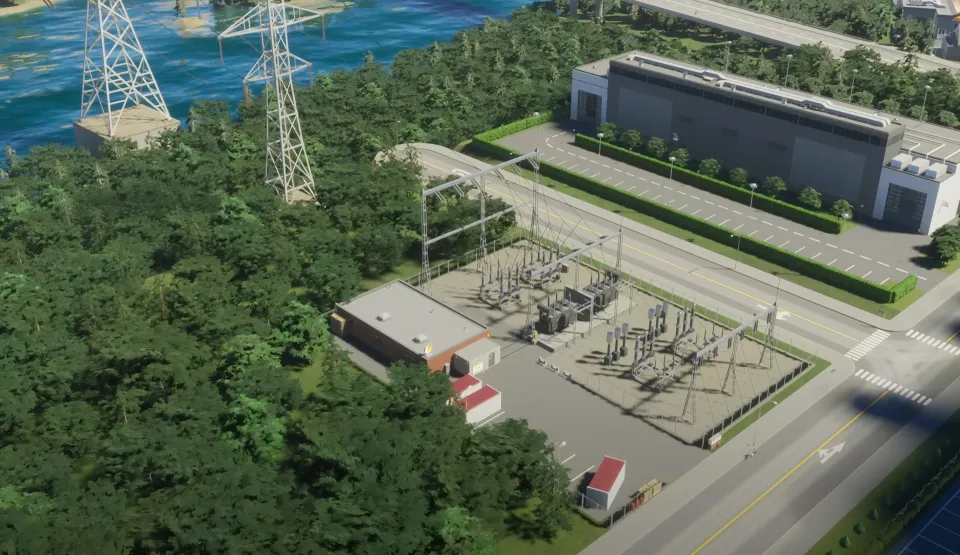
Energy nerd? Cities Skylines 2 is the video game for you
Taking a look at electricity network management in the upcoming city-builder video game Cities Skylines 2
I love city-builder video games. I’ll never forget the sense of wonder I felt as a kid when I played the original DOS version of SimCity for the first time at a friend’s house. Since then I’ve poured countless hours (OK, days) into the various sequels to SimCity. In recent years I’ve been playing Cities Skylines, an alternative to SimCity that approaches things in a familiar but different way.
And I love energy infrastructure. I’ve always been fascinated by it though it’s only since joining Octopus Energy last year that I’ve really had my eyes opened to how complex and interesting energy systems really are. I’m particularly fascinated by the future of electricity networks and the transition from fossil fuels to green sources of energy – there are so many interesting technologies involved.
So naturally I’ve been on the lookout for a game that combines:
- City-builder simulation from a game like Cities Skylines
- Technology and concepts for managing a complex electricity network
Various games have attempted this in the past – including SimCity and Cities Skylines – however these often use very basic concepts for electricity networks. For example neither of these games have any concept of high and low voltage transmission lines, nor capacity of transmission lines. More often than not you’ll place power stations, drag out some generic power lines, and then just ensure you keep building more power stations to keep up with demand. Easy as that!
In reality electricity networks are much more complex and this gets lost in most city-builder games. There are some exceptions such as Power to the People, which is a recent game that really digs into detailed areas of electricity networks. And while that game has all the technologies that I’m interested in, it’s more of a puzzle game rather than a city-builder. Likewise with Green With Energy which isn’t a full city-builder and more of a grid-management challenge.
Then Cities Skylines 2 was announced…
Cities Skylines 2 is the latest version of the SimCity alternative and I couldn’t be more excited about its release – hopefully in October all being well. There are many reasons why I’m excited about it, though I’ll be focussing purely on the energy-related aspects for the remainder of this post.
Electricity in Cities Skylines 2
One of the features of Cities Skylines 2 that I’m most excited for is the new system for building and managing electricity networks. And if the recent developer diary is anything to go by then it’s going to be absolutely packed with features that I’ve been desperate to see in any video game, let alone a city-builder.
At a high level electricity networks in Cities Skylines 2 appear to have the complexities of real electricity networks, whilst keeping things simple enough to remain enjoyable to play. This is good.
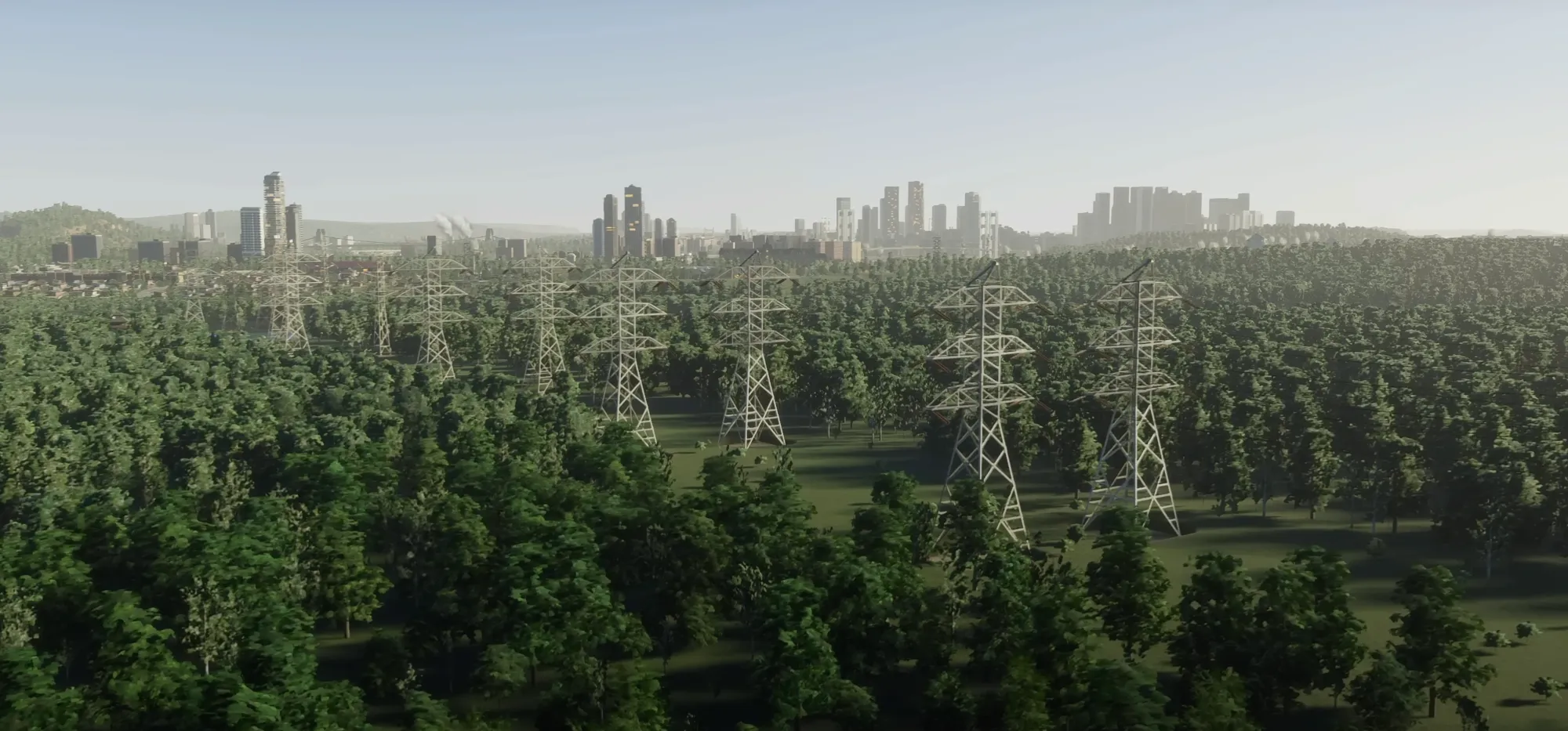
Now you have to think about where and when to use high and low voltage transmission lines, rather than simply using one magic power line that can do absolutely everything across unlimited distances. Now you need to use high-voltage lines to cover longer distances and use low-voltage lines over shorter distances to connect to houses and other buildings.
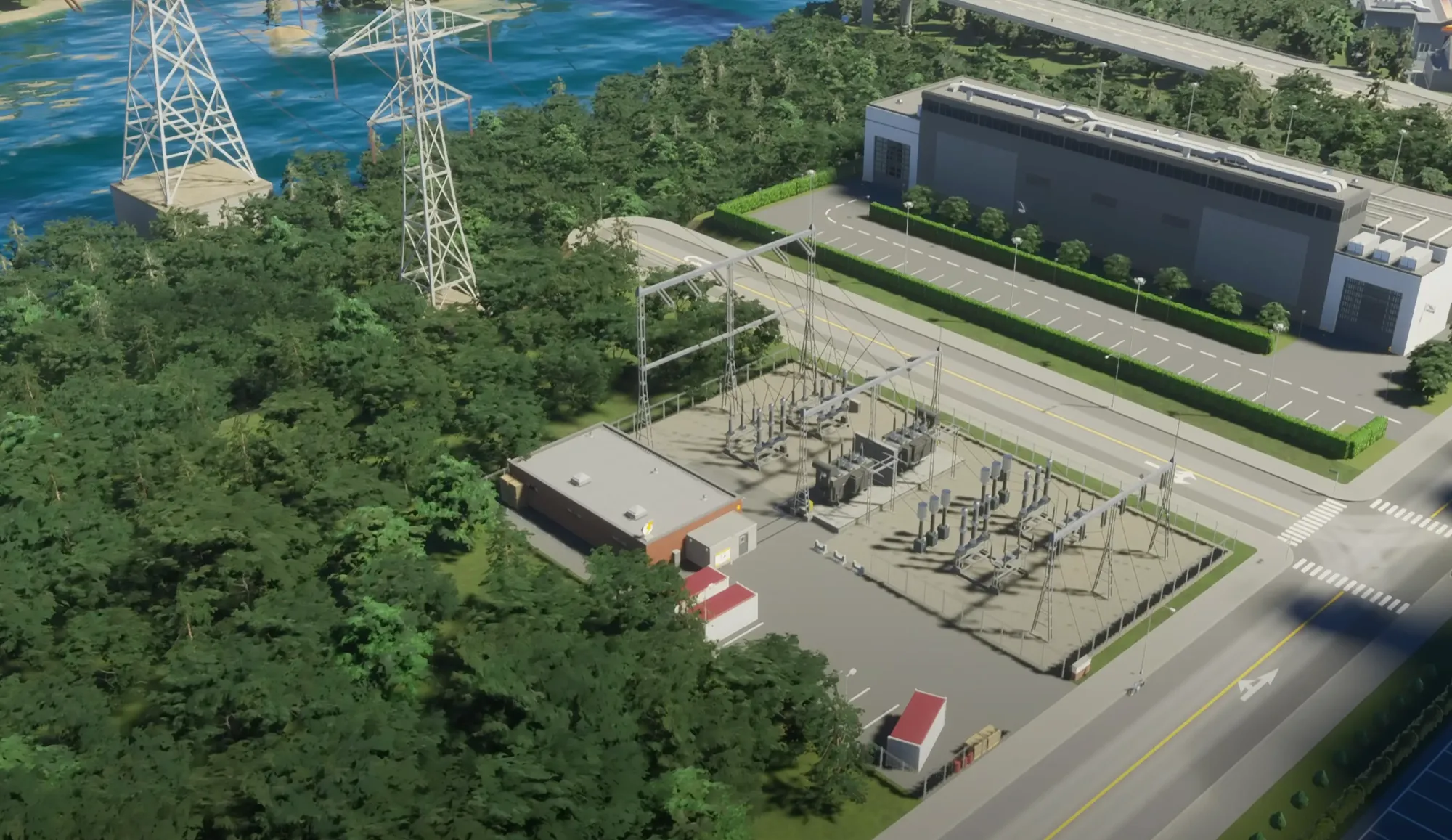
You have to think about transformers so you can step the voltages up and down between the two types of transmission lines. And you have to think about the capacity of the lines as well as the transformers so you don’t overload the network.
And if you do overload the network? Well now you need to deal with bottlenecks where demand is greater than the lines and transformers can supply. How you work around this is up to you, whether you upgrade the infrastructure or reroute the network in a more efficient way.
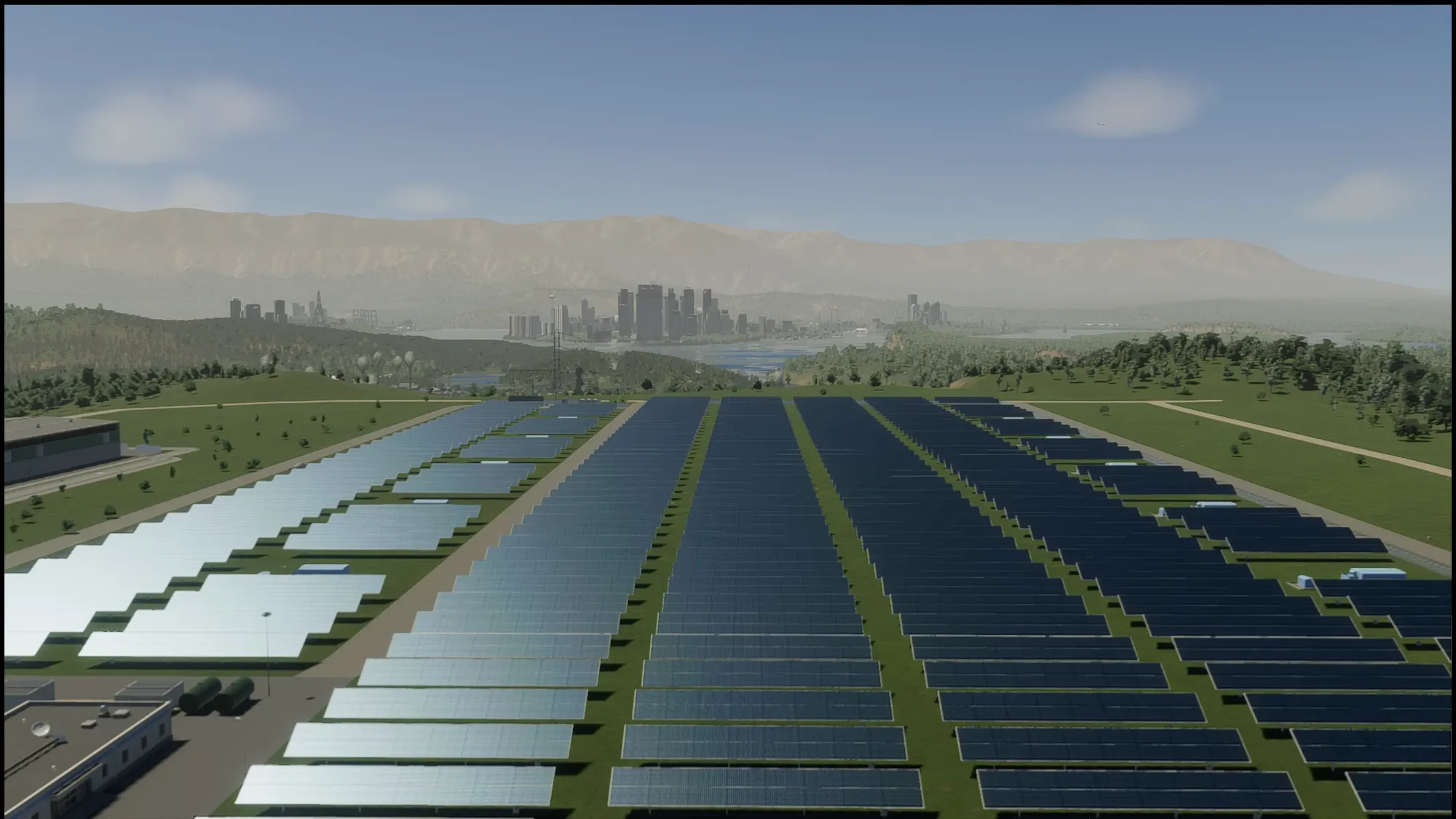
Renewable generation and cutting-edge storage technologies are also a big part of the new game. Solar and wind generation are in the game as they were before, both of which offer more options than before. And there’s now battery storage, meaning you can build infrastructure to store excess renewable energy while demand is low to use at a later time when demand is higher. This is so cool!
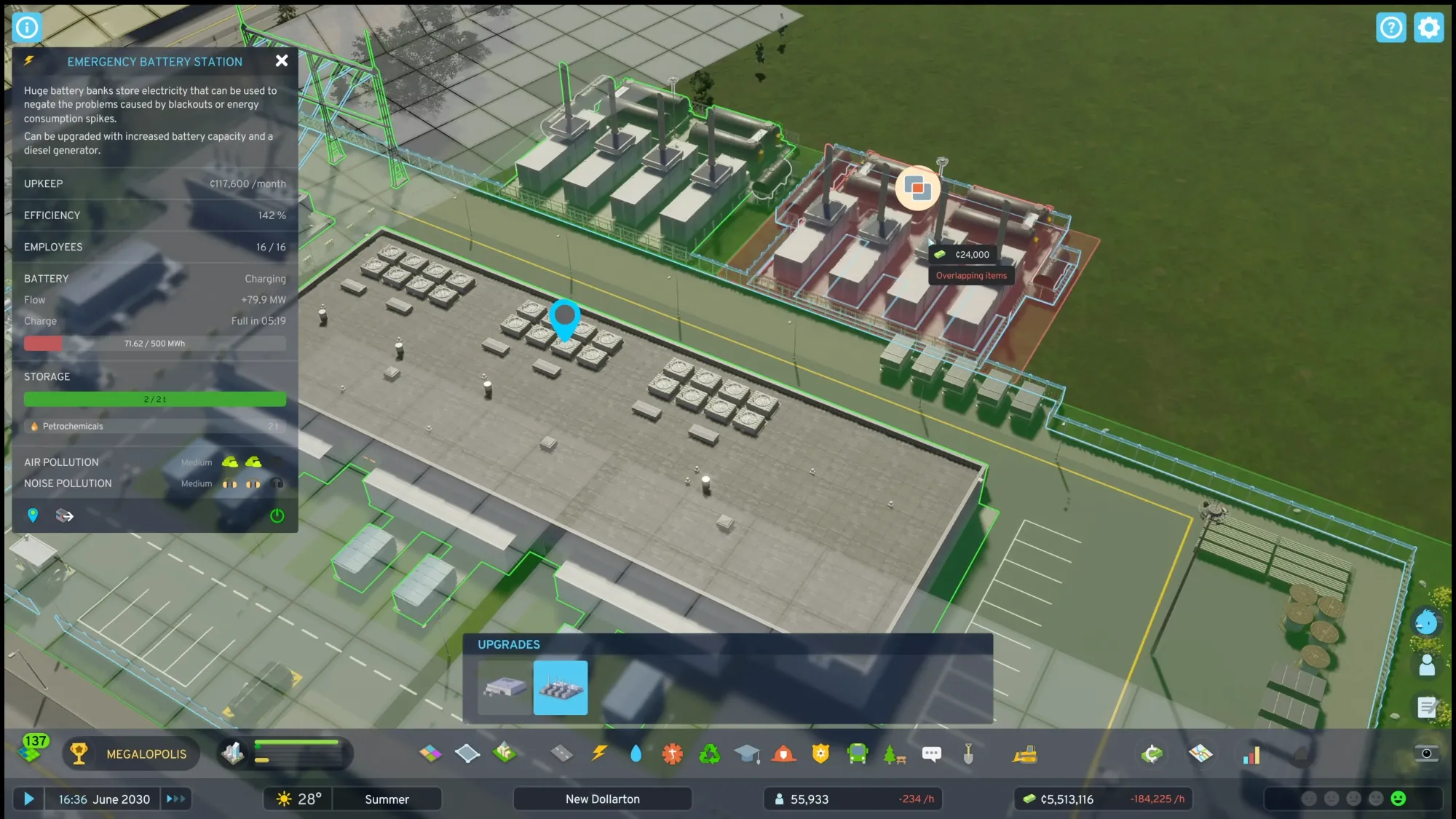
Weather and seasons now play a role in how the electricity network behaves. If it’s a hot day and everyone is turning on their air-conditioning then demand will spike and you may get bottlenecks in the grid that you hadn’t noticed before. If it’s a cloudy day then your solar generation will change and you’ll have less power in the network. Your electricity network is dynamic, much like they are in reality.
And all of this is integrated with the rest of the city that you need to manage. Electric vehicles are a big feature in the sequel and no doubt this will also have an impact on how you design your electricity network. Likewise with things like home solar and, I hope, even more types of technologies and services.
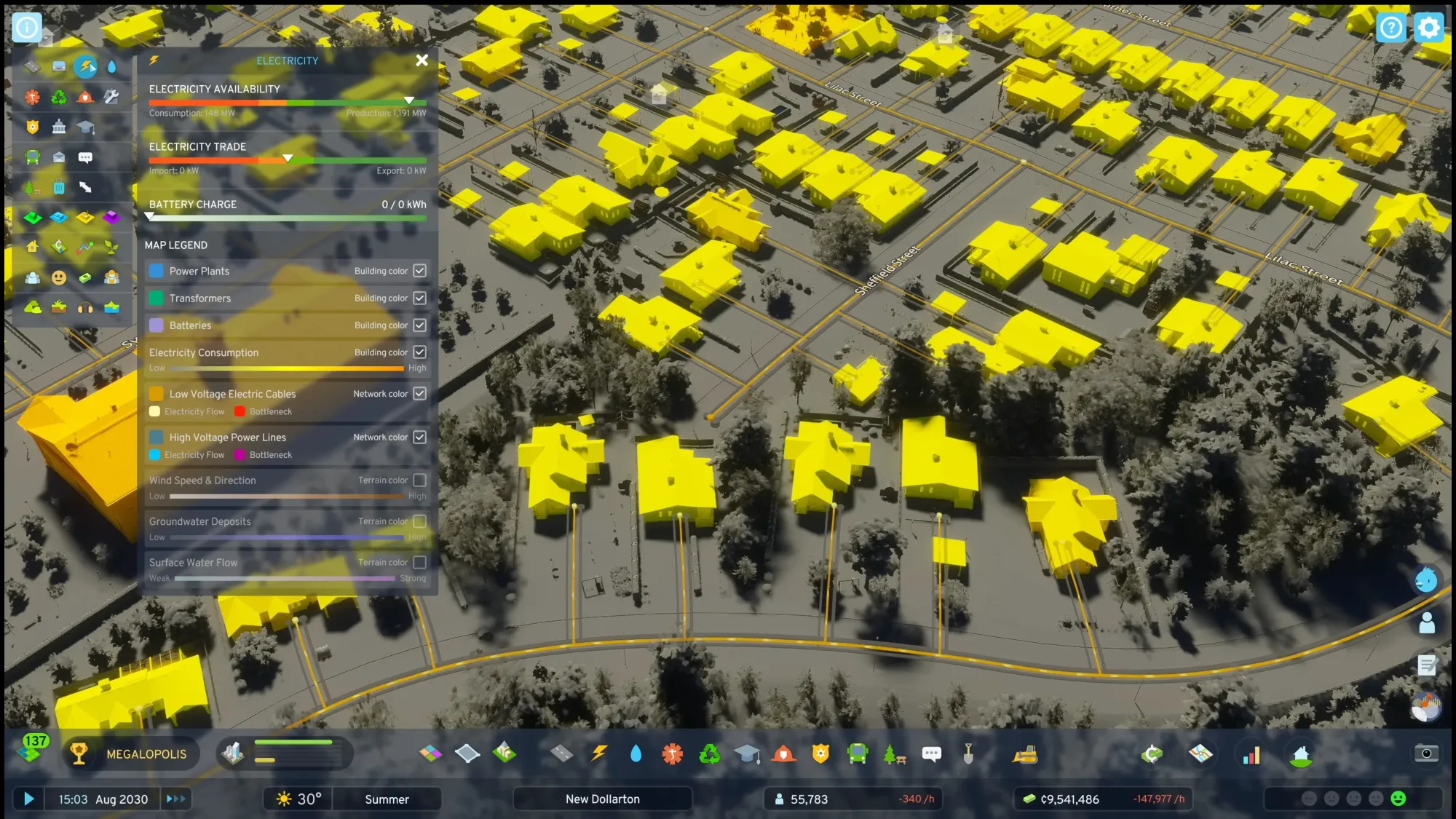
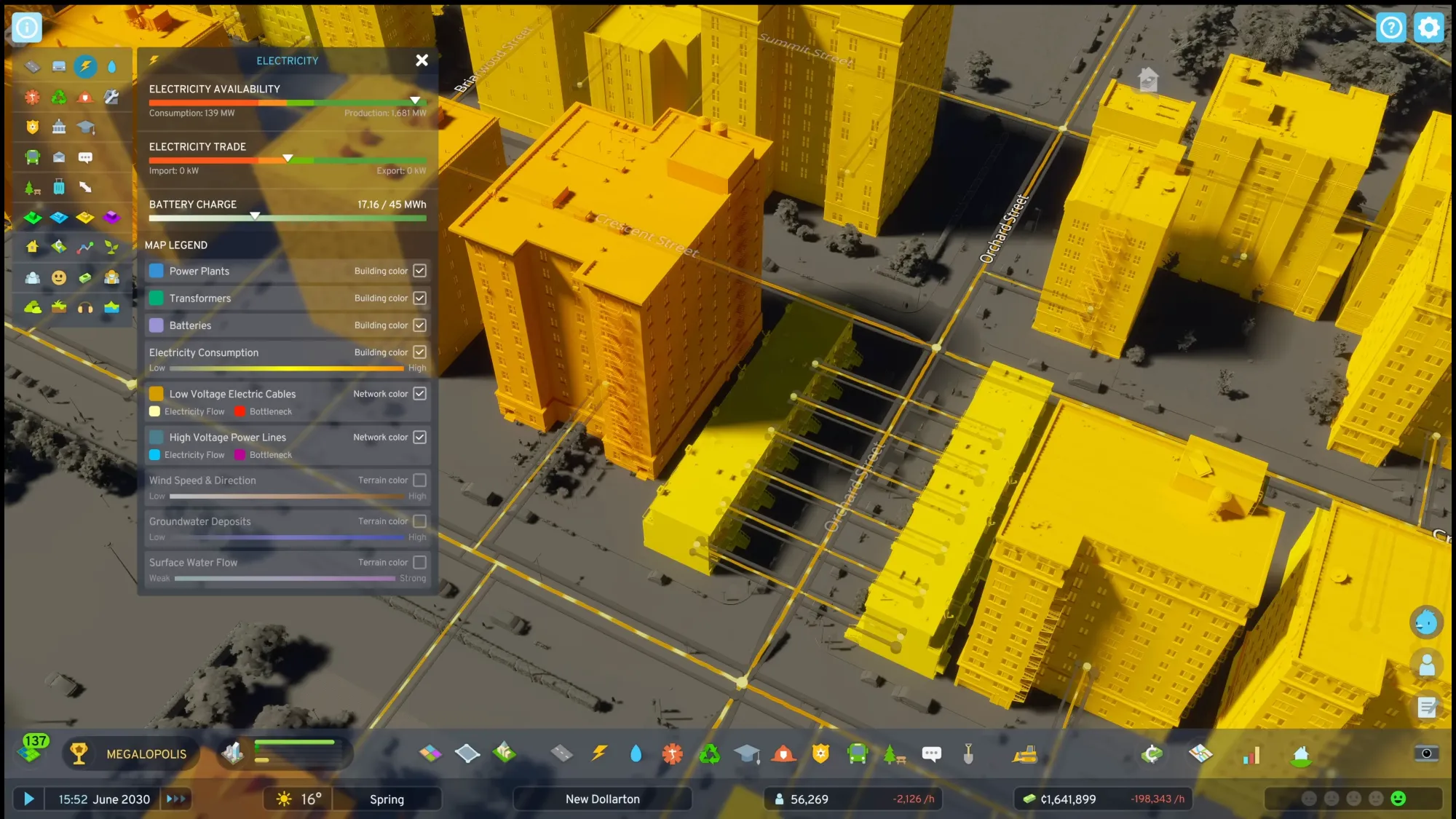
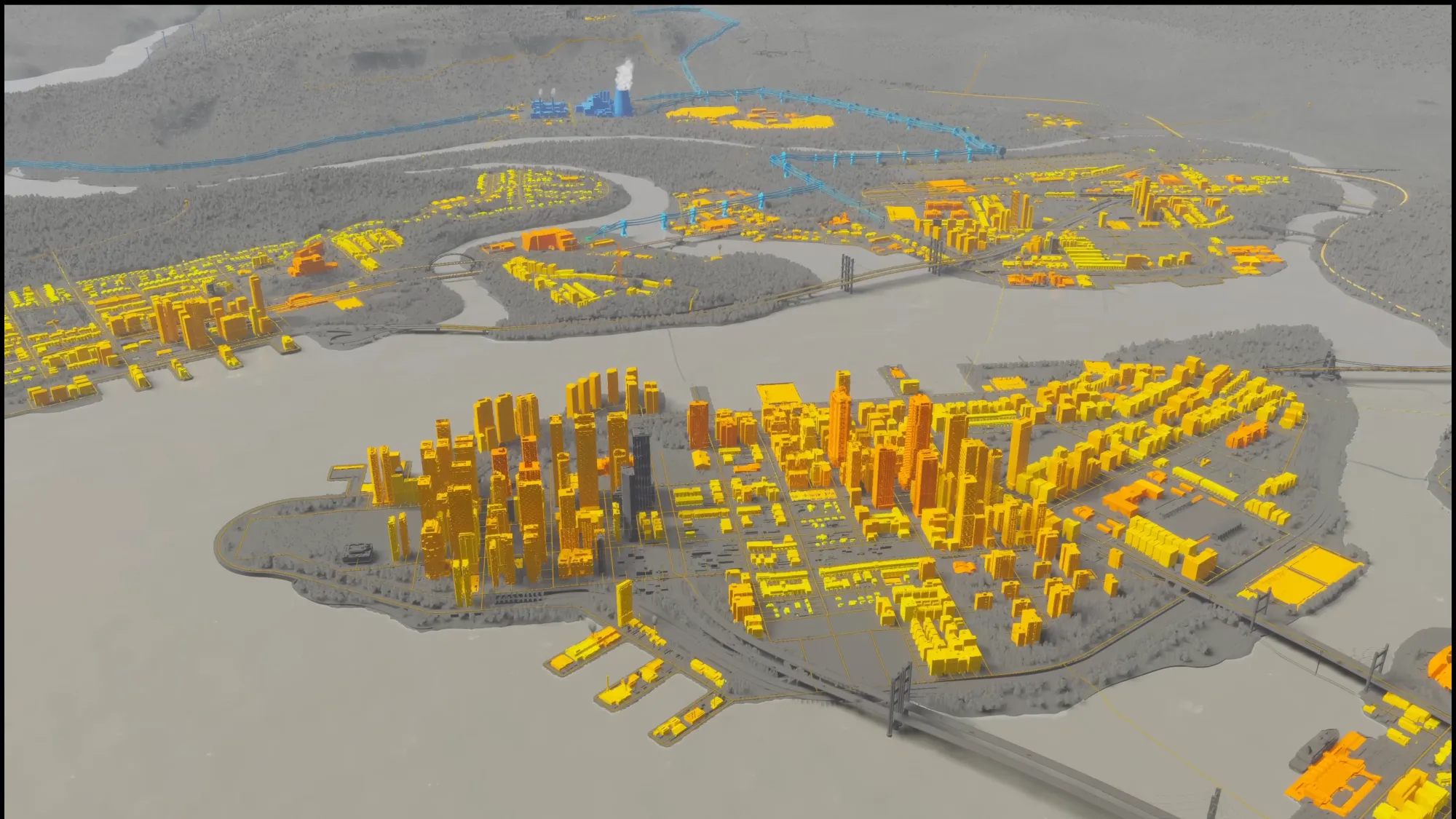
To wrap it up you get all the beautiful data layers that come with Cities Skylines, allowing you to peal back the city and understand exactly what’s going on. Why is part of your city out of power? Which parts of the city are demanding the most power? Where is the best place to construct a new wind farm? All of this can be found out in the data views – probably my favourite part of the game.
Things I like
- The management system for electricity is realistic but not overly complex
- High and low voltage transmission lines, which can go above or below ground
- Automatic placement of low-voltage lines under roads, which is neater and saves so much time
- Transformers to step up and down between low and high voltage
- Transformers have a capacity level which requires planning around
- Transmission capacity and bottlenecks
- Trading energy with neighbouring regions
- Solar farms that look realistic in terms of scale
- Wind turbines look way better compared to the first Cities Skylines
- Battery storage to make use of solar at night and wind when calm
- Various ways to upgrade components of the electricity system in a modular way
- Weather influencing the electricity generation (eg. less solar, more wind)
- Seasons influencing spikes in demand (eg. more AC during hot spells)
- Policies that influence citizens to reduce electricity consumption
- Beautiful data layers to help with planning and diagnosing issues
Things I don’t like
I only have a few major concerns so far:
- Battery storage and thermal power plants create air pollution – this might be because battery storage in the game can include an optional diesel generator (probably for emergency power)
- Battery storage only mentions solar power, no confirmation it’s also for wind
- Distance between high-voltage pylons seems too short
- Wind turbines seem very basic and there doesn’t appear to be a concept of a wind farm with substation, batteries, etc. unlike with solar power
I imagine these will be dealt with over time, especially as things like the air pollution for battery storage just don’t make any sense.
Things that are missing or not mentioned yet
The following are some of the things that weren’t mentioned as included in the sequel and would make the game even better:
- Pumped hydro storage as an alternative to batteries
- Different wind turbine types with different MW output levels (eg. offshore)
- Dynamic response (eg. asking consumers to change usage at certain times)
- Different types of electricity tariffs (eg. lower costs for smart usage)
- Home solar (though some houses do have solar panels in the video)
- Home batteries to store home solar energy
- District heating (ie. ground source heat pumps)
- Air source heat pumps (especially for European cities)
- Using EV batteries as grid storage
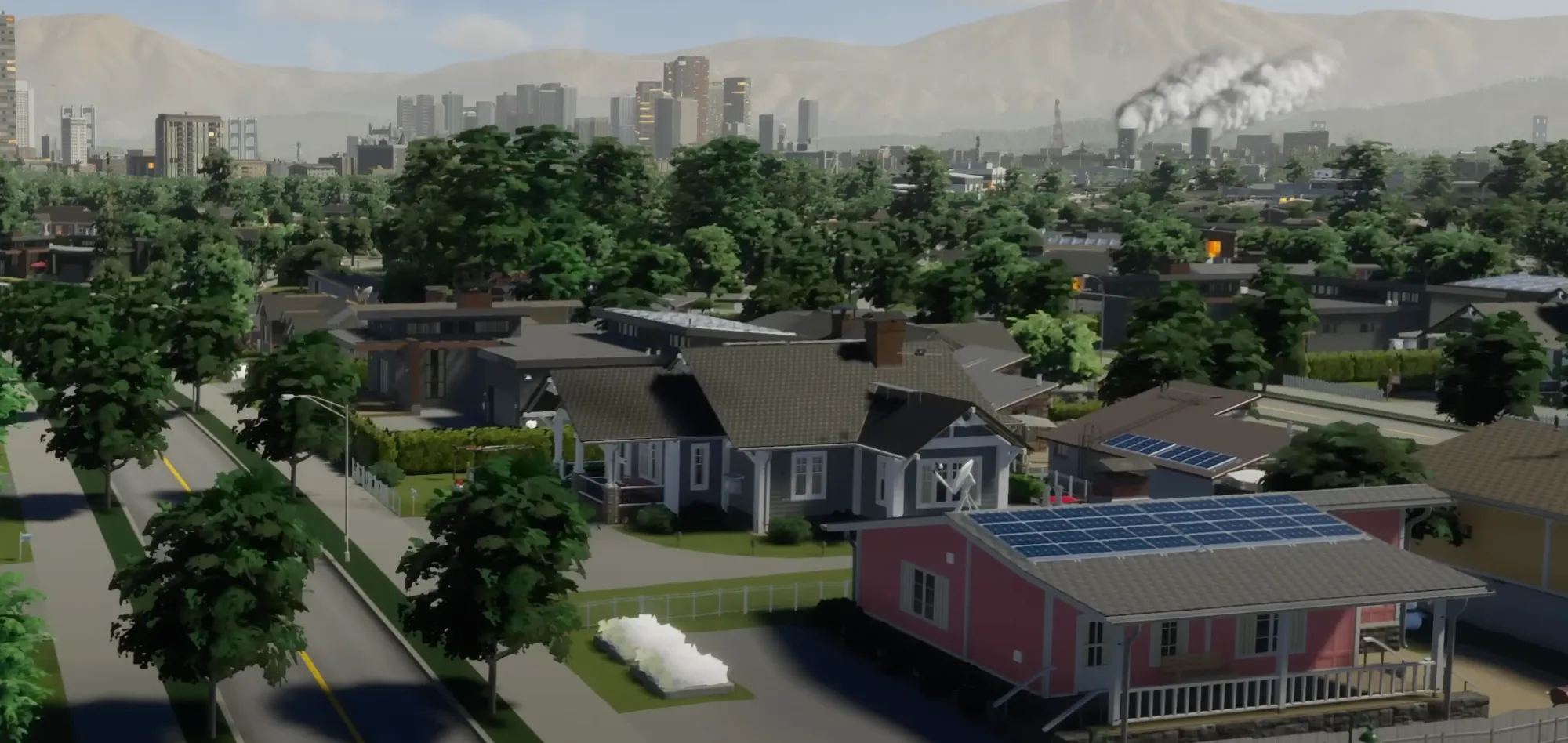
Some of these are probably too much detail for a fun game, though games like Power to the People have managed to tackle them so I think it’s possible that Cities Skylines 2 can do so too.
October can’t come soon enough
I’m obviously excited about how this sequel is shaping up and can’t wait to get my hands on it to try it out for myself.
And no doubt there’s a lot of detail that’s been left out so far. I imagine much of what has been shown will be tweaked and improved before release. Still, even in its current state it’s already very close to the energy-management game that I’ve dreamed of.